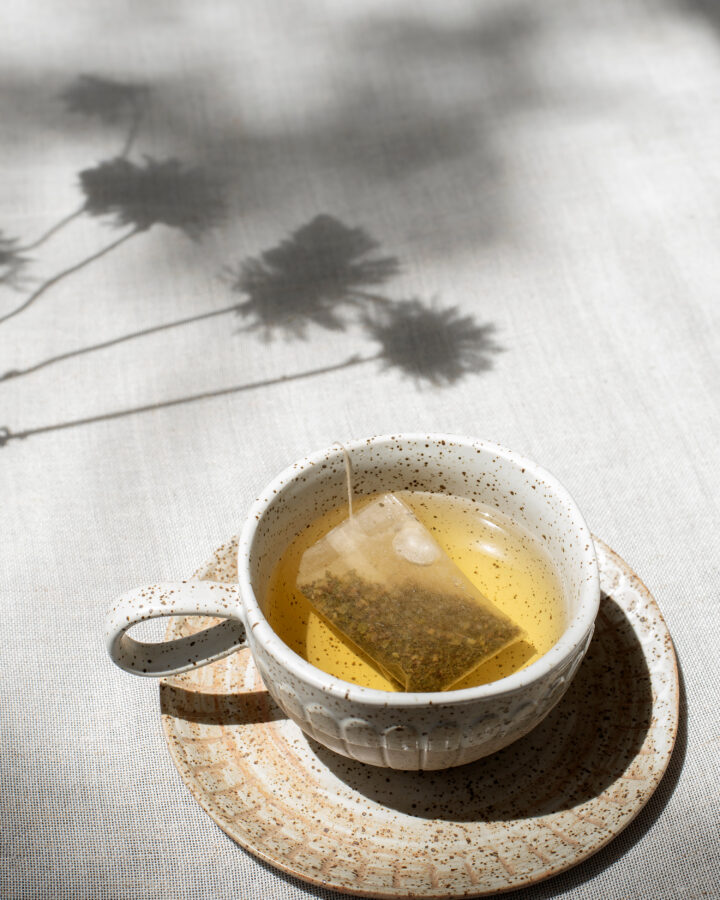7 Foods and Beverages That Have the Most Microplastics (and What to Eat Instead)

Uncover which everyday foods and drinks are worst for microplastic load, plus learn the simple, science-backed swaps that reduce risk fast.
Microplastics, tiny plastic particles between 1 nanometer (nm) and 5 millimeters (mm) in size., and nanoplastics, plastic particles less than 1 micrometer (1,000 nm), have infiltrated our environment, including the food we consume daily. It seems like every month a new study comes out finding microplastics in a new and disturbing place: from bones to bottled water.
One 2025 study published in Nature Medicine found something wild: On average, human brain tissue contains about 4,800 micrograms of plastic per gram.
That’s about the same amount of plastic as you’d find in a plastic spoon, according to some measures.
While research into the long-term health effects of microplastics is ongoing, and there are no targets for “safe” amounts of microplastics in our bodies, a 2024 study in the New England Journal of Medicine (NEJM) linked the presence of microplastics in arterial plaque to a significantly higher risk of cardiovascular events. Researchers have also connected micro- and nanoplastic exposure to inflammation, immune dysregulation, and metabolic disruptions.
Still, we’re early in understanding what these exposures mean for human health. There are no established safety thresholds for microplastics in the body. But the absence of a limit doesn’t mean the absence of risk.
To help readers understand where exposure might be coming from, we’ve ranked common foods and beverages from the lowest to highest measured microplastic load per serving. But particle count isn’t the whole story. Researchers are measuring how much plastic is in our food, and are still trying to figure out how much harm it might cause.
Why Less Plastic Doesn’t Always Mean Less Risk
Here’s where it gets even more interesting: In toxicology, it’s common to see what’s known as a U-shaped dose-response curve, meaning low doses of certain substances can have outsized effects (just like high doses), especially if they are endocrine disruptors or inflammation triggers Dr. Raffaele Marfella, the lead author of the NEJM study, told us: “This concept is relevant when considering microplastic exposure, particularly regarding vascular inflammation and systemic immune responses. Our findings suggest that even low-level chronic exposure to micro- and nanoplastics, especially polyethylene and polyvinyl chloride, may increase cardiovascular risk.”
We’re still learning what “micro” really means in the context of chronic exposure. But understanding where microplastics and nanoplatics might be showing up on your plate is a smart place to begin.
Whether you sip, sprinkle, bite, or brew, these are some of the most studied sources of microplastics in the food system today, along with better-for-you alternatives that can support your [lon-jev-i-tee]nounLiving a long life; influenced by genetics, environment, and lifestyle.Learn More and long-game health.
7 Foods and Beverages That Have the Most Microplastics
1. Sea Salt
Plastic Load: 0.4–5.8 particles per teaspoon (5g)
Sea salt has been found to contain microplastics due to the contamination of ocean waters. A 2023 study analyzing 13 European brands found levels ranging from 74 to 1,155 particles per kilogram, with traditionally harvested salts containing significantly fewer plastics. The most common type of plastic is polyethylene terephthalate, used to make plastic bottles. While the health impact of ingesting trace plastics is still unclear, sea salt can contribute meaningfully to overall exposure.
What to choose instead: Consider using mined rock salt or Himalayan pink salt, which are less likely to be contaminated with modern microplastics. If using sea salt, choose brands with traditional harvesting methods or third-party purity testing for added transparency
2. Beer
Plastic Load: 2–79 particles per liter
Microplastics have been detected in various beer samples, likely introduced through contaminated water sources or during the brewing process. A study analyzing 24 German beer brands found microplastic fibers, fragments, and granular material in all samples, with counts ranging from 2 to 79 fibers per liter. A study in PLOS ONE found microplastic particles in all 12 beer brands tested across the U.S. and Canada
What to choose instead: Support local breweries that prioritize sustainable practices and use filtered water. Moderating beer consumption and staying hydrated with filtered water can also help reduce overall microplastic intake.
3. Bottled Water
Plastic Load: 325–10,000 particles per liter
Studies have shown that bottled water can contain a significant number of microplastic particles, likely originating from the packaging and bottling process. For instance, research indicates that bottled water samples contained an average of 325 microplastic particles per liter, with some samples containing up to 10,000 particles per liter.
What to choose instead: Opt for filtered tap water stored in stainless steel or glass containers to minimize microplastic exposure and reduce environmental impact. Never drink water from a plastic water bottle that has been in the sun.
4. Shellfish
Plastic Load: 7.6–10.7 particles per gram (shrimp); ~1.4/g (oysters)
Shellfish such as shrimp, mussels, clams, and oysters are filter feeders, making them susceptible to accumulating microplastics from their environment. Research has shown that these organisms can ingest microplastics, which are then passed on to consumers.
What to choose instead: Diversify your protein sources by incorporating plant-based proteins, poultry, or sustainably sourced fish known for lower microplastic contamination. One study found that fish from Australia have lower microplastic loads.
5. Rice
Plastic Load: 13 mg plastic per 100g of Instant Rice; ~3–4 mg plastic per 100g washed rice
Rice may seem like a clean staple, but it can carry surprising levels of plastic. A 2021 study published in the Journal of Hazardous Materials found polyethylene, polypropylene, and PET in 95% of store-bought rice samples. Contamination didn’t differ much between paper and plastic packaging, and simply shaking the bag had no effect. However, washing rice reduced plastic content by up to 40%.
The study also revealed that instant (pre-cooked) rice contained four times more plastic than uncooked rice, averaging 13 milligrams per 100-gram serving. In comparison, standard rice averaged around 3–4 milligrams per serving, depending on whether it was rinsed. Over time, this could add up to nearly 1 gram of plastic per person annually through rice consumption alone.
What to choose instead:
Choose bulk or minimally processed rice and rinse thoroughly before cooking. Skipping instant varieties and choosing organic or low-intervention rice can further reduce exposure and support better metabolic health.
6. Apples and Carrots
Plastic Load: 44.6 million particles per apple; ~14.7 million particles per carrot (150g)
Microplastics aren’t just sticking to the surface of your produce—they may be absorbed directly into plant tissues. A 2020 study published in Environmental Research was the first to quantify microplastics in commonly consumed fruits and vegetables. The researchers found that apples and carrots had the highest concentrations, with median levels reaching 223,000 particles per gram in fruits and 97,800 per gram in vegetables (Oliveri Conti et al., 2020). Apples topped the contamination list for fruits, while carrots led among vegetables. The study also noted that microplastics found in produce were often under 10 micrometers in size, small enough to enter human tissues.
What to choose instead:
Choose unpackaged produce when possible, and shop from local sources with transparent farming practices. Wash fruits and vegetables thoroughly, and consider peeling when appropriate. A rotation of organic and seasonal produce can also help reduce long-term exposure from any one source.
7. Tea
Plastic Load: 11.6 billion From 1 plastic tea bag.
Certain plastic tea bags, when steeped in hot water, can release billions of microplastic and nanoplastic particles into the beverage. A study found that steeping a single plastic teabag at brewing temperature released approximately 11.6 billion microplastics and 3.1 billion nanoplastics into the cup.
What to choose instead: Use loose-leaf tea with a stainless steel or glass infuser (Evervessel makes a plastic-free tea infuser), or select brands that offer biodegradable, plastic-free tea bags like Republic of Tea, Yogi Tea, or Harney & Sons.
Reducing your exposure to microplastics involves making mindful choices about the foods and beverages you consume. By selecting alternatives with lower contamination risks and supporting sustainable practices, you can contribute to both your health and the well-being of the environment. In the Super Age, being informed empowers you to make decisions that enhance your vitality and longevity.
Check out our Super Age Video Breakdown on Microplastics in Food
Read This Next:
The information provided in this article is for educational and informational purposes only and is not intended as health, medical, or financial advice. Do not use this information to diagnose or treat any health condition. Always consult a qualified healthcare provider regarding any questions you may have about a medical condition or health objectives. Read our disclaimers.

